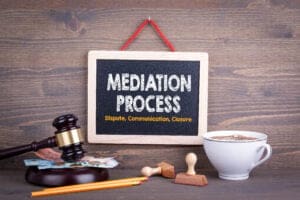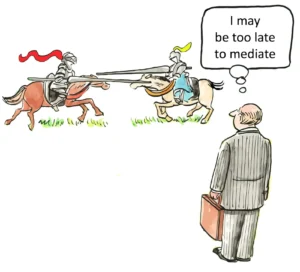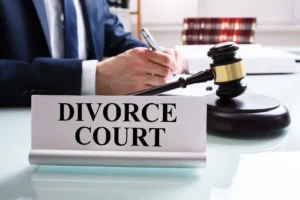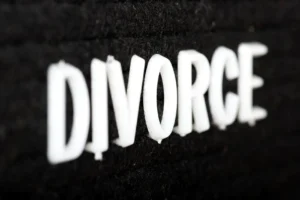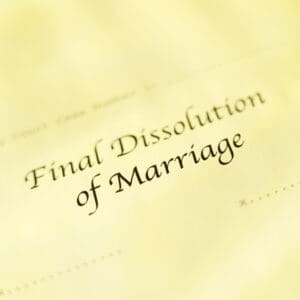Resolving Noisy Neighbor Disputes: A Comprehensive Legal Guide for Property Rights and Peaceful Coexistence
Property owners frequently ask, “What legal options do I have when dealing with a consistently noisy neighbor?” The answer involves understanding a complex web of municipal noise ordinances, state property laws, and constitutional principles that balance individual rights with community standards. Unlike simple complaints that resolve through conversation, persistent noise disputes require strategic legal approaches grounded in well-established property rights doctrine.
Modern noise disputes have evolved beyond traditional residential conflicts to include commercial operations, short-term rentals, and technology-related disturbances. The legal framework addressing these issues reflects fundamental American principles: property rights, due process, and the proper role of government in mediating private disputes without overreaching constitutional boundaries.
Understanding the Legal Foundation of Noise Complaints
Noise ordinances represent one of the most widely accepted forms of municipal regulation, rooted in the government’s police power to protect public health, safety, and welfare. These local laws typically establish decibel limits ranging from 55-65 decibels during daytime hours, with stricter limits during designated quiet hours, usually between 10:00 p.m. and 7:00 a.m. The constitutional foundation for such regulations stems from the principle that property rights, while fundamental, are not absolute when they substantially interfere with others’ reasonable use and enjoyment of their property.
State laws complement local ordinances through disturbing the peace statutes and nuisance doctrines. These broader legal frameworks provide additional remedies when local enforcement proves inadequate. The interaction between state and local law creates multiple avenues for resolution, though it also requires careful navigation to avoid jurisdictional conflicts or procedural missteps.
The legal distinction between acceptable community noise and actionable nuisance centers on reasonableness standards developed through decades of case law. Courts consistently apply objective tests: would the noise substantially interfere with a reasonable person’s use and enjoyment of their property? This standard intentionally avoids subjective sensitivities while protecting legitimate expectations of residential tranquility.
What Constitutional Principles Apply to Neighbor Noise Disputes?
Property rights under the Fifth and Fourteenth Amendments establish the foundational framework for resolving noise disputes. The Supreme Court has consistently recognized that property ownership includes the right to exclude others and to use property without unreasonable interference from neighbors. However, these rights operate within the broader context of community standards and legitimate government regulation.
Due process considerations require that noise regulations provide fair notice of prohibited conduct and establish clear enforcement procedures. Vague ordinances that rely on subjective standards like “unreasonable” noise without specific guidelines may face constitutional challenges. Well-drafted ordinances specify decibel limits, time restrictions, and exemptions for necessary activities like emergency services or essential municipal functions.
The Equal Protection Clause ensures that noise enforcement applies consistently across neighborhoods regardless of economic status or political influence. Selective enforcement patterns that target specific groups or areas while ignoring similar violations elsewhere may violate constitutional protections. This principle particularly matters in communities where enforcement resources vary significantly between different neighborhoods.
First Amendment protections occasionally intersect with noise regulations when the disputed sound involves expressive conduct. Religious services, political rallies, or artistic performances may receive enhanced constitutional protection, requiring governments to apply the least restrictive means of achieving compelling public interests. However, content-neutral time, place, and manner restrictions generally survive constitutional scrutiny when reasonably applied.
How Do Municipal Noise Ordinances Actually Work?
Local noise laws typically operate through a tiered enforcement system beginning with warnings and escalating to fines, court appearances, and potential criminal penalties for repeat offenders. Most ordinances establish specific procedures for filing complaints, investigating violations, and providing due process protections for accused parties. Understanding these procedural requirements becomes crucial for effective enforcement.
Decibel measurements provide objective standards that reduce subjective disputes about noise levels. However, measuring sound accurately requires proper equipment, training, and consistent methodology. Many municipalities lack resources for comprehensive sound monitoring, creating enforcement gaps that frustrated residents must navigate through alternative legal remedies.
Time restrictions typically divide day and night periods with different noise tolerances reflecting community expectations about reasonable living patterns. Daytime limits generally accommodate normal residential activities, lawn maintenance, and moderate social gatherings. Nighttime restrictions protect sleep and family life by requiring substantially lower noise levels during designated quiet hours.
Exemptions and variances recognize that some activities require noise levels exceeding normal limits. Construction work, emergency services, and public events may receive permits allowing temporary deviation from standard requirements. These exceptions require balancing community needs against individual property rights through established administrative procedures.
What Are the Most Effective Steps for Resolving Noise Disputes?
Direct communication remains the most successful approach for resolving neighbor disputes before formal legal action becomes necessary. Approaching neighbors respectfully during appropriate hours, explaining specific concerns, and proposing reasonable solutions often achieves better long-term results than immediate resort to authorities. This approach also demonstrates good faith efforts that strengthen subsequent legal positions if formal action becomes necessary.
Written documentation creates essential evidence for any formal complaint process. Detailed logs recording dates, times, duration, and specific descriptions of noise disturbances establish patterns that support legal claims. Including weather conditions, witnesses present, and attempts to resolve issues informally provides comprehensive records that courts and enforcement agencies find credible and useful.
Mediation services offer structured environments for resolving disputes without formal legal proceedings. Many communities provide free or low-cost mediation through local government agencies, community organizations, or private mediators. Professional mediators help parties identify underlying interests, explore creative solutions, and develop agreements addressing specific concerns while maintaining neighborly relationships.
HOA involvement provides additional resolution mechanisms for residents in planned communities or condominium associations. Homeowners’ associations typically maintain authority to enforce community standards through established procedures that may prove more responsive than municipal enforcement. However, HOA actions must comply with governing documents and state laws regulating homeowners’ associations.
When Should You Contact Law Enforcement About Noise Complaints?
Police involvement becomes appropriate when direct communication fails and noise violations clearly exceed legal limits during enforcement hours. Most departments maintain non-emergency numbers for noise complaints, though response times and priorities vary significantly based on available resources and competing demands. Documenting previous attempts to resolve issues informally strengthens police response and potential citations.
Evidence requirements for successful police intervention include specific information about noise sources, duration, and legal violations. Officers need sufficient detail to identify violations upon arrival and issue appropriate citations or warnings. Generic complaints about “loud neighbors” prove less effective than specific reports identifying particular activities, times, and legal standards being violated.
Follow-up procedures often require complainants to provide additional information or testimony if cases proceed to court. Understanding these requirements before filing initial complaints helps ensure adequate preparation for potential legal proceedings. Some jurisdictions require sworn affidavits or court appearances that may discourage frivolous complaints while ensuring due process for accused parties.
Criminal vs. civil enforcement creates different procedural requirements and potential outcomes. Criminal noise violations typically result in fines, probation, or community service imposed by courts after prosecution proves violations beyond reasonable doubt. Civil enforcement through code compliance agencies may focus on correcting violations rather than punishment, though both approaches can achieve effective noise reduction.
How Do State Laws Complement Local Noise Ordinances?
Nuisance doctrines provide broader legal frameworks for addressing noise problems that exceed local enforcement capacity or fall outside municipal ordinance coverage. State nuisance law typically requires proving that defendant’s conduct substantially and unreasonably interferes with plaintiff’s use and enjoyment of property. This standard focuses on objective reasonableness rather than subjective sensitivity, providing balanced protection for both property owners and community standards.
Disturbing the peace statutes create criminal liability for conduct that disrupts community tranquility beyond acceptable limits. These laws often apply broader geographic areas than local ordinances and may provide stronger enforcement tools including arrest authority and enhanced penalties for repeat offenders. However, criminal prosecution requires meeting higher burden of proof standards than civil remedies.
Property damage claims may arise when excessive noise causes measurable harm to property values, physical damage from vibrations, or interference with business operations. These civil claims require proving actual damages and causal connections between defendant’s noise and plaintiff’s losses. Successful property damage claims can result in monetary compensation and injunctive relief ordering specific noise reduction measures.
Landlord-tenant implications create special considerations when noise disputes involve rental properties. State landlord-tenant laws may require property owners to address tenant behavior that violates lease terms or disturbs other tenants’ quiet enjoyment rights. These laws often provide expedited procedures for addressing disruptive tenants while protecting legitimate tenant rights through due process requirements.
What Evidence Do You Need to Build a Strong Noise Complaint Case?
Documentation strategies require systematic approaches to recording noise disturbances in ways that courts and enforcement agencies find credible and useful. Effective documentation includes specific dates and times, detailed descriptions of noise sources and characteristics, duration measurements, and impacts on complainant’s reasonable property use. Photographs, videos, and audio recordings provide powerful evidence when properly collected and authenticated.
Witness testimony strengthens noise complaints by providing independent corroboration of disturbances and their impacts. Neighbors experiencing similar problems can provide valuable testimony supporting patterns of excessive noise. However, witness availability and willingness to participate in formal proceedings varies significantly, requiring early identification and coordination of potential witnesses.
Professional measurements using calibrated sound meters provide objective evidence of decibel levels that may prove decisive in formal proceedings. While expensive, professional sound studies can establish precise noise levels, frequency patterns, and comparisons with legal limits. Some attorneys recommend professional measurements for significant disputes where monetary damages or property values are at stake.
Prior complaints and responses demonstrate escalating patterns of violation and good faith efforts to resolve disputes through appropriate channels. Documentation should include copies of informal communications, police reports, code enforcement actions, and any responses or lack thereof from responsible parties. This chronological record supports claims that formal legal action became necessary after reasonable alternatives failed.
How Do Courts Typically Handle Neighbor Noise Disputes?
Small claims court provides accessible forums for noise-related monetary claims within statutory dollar limits, typically ranging from $2,500 to $7,500 depending on state law. Small claims procedures emphasize informal presentation of evidence and streamlined resolution without requiring attorney representation. However, success requires thorough preparation and understanding of applicable legal standards and evidence requirements.
Injunctive relief offers remedies focused on stopping problematic behavior rather than monetary compensation. Courts may order specific noise reduction measures, restrict certain activities during designated hours, or require installation of sound dampening materials. Injunctive relief provides powerful tools for addressing ongoing disputes where monetary damages alone prove inadequate.
Damage calculations in noise cases typically focus on diminished property values, lost sleep, interference with work productivity, and medical expenses related to stress or hearing damage. Courts generally require expert testimony for significant damage claims, though smaller amounts may be proven through lay testimony about specific impacts. Damage calculations must demonstrate causal relationships between defendant’s noise and plaintiff’s claimed losses.
Appeals and enforcement procedures vary significantly by jurisdiction and case type. Successful noise complaint judgments require ongoing enforcement mechanisms to ensure compliance with court orders. Understanding available enforcement tools and their limitations helps parties develop realistic expectations about potential case outcomes and long-term effectiveness.
What Role Do HOAs and Property Management Companies Play?
Community standards enforcement through homeowners’ associations provides alternative dispute resolution mechanisms that may prove more responsive than municipal enforcement. HOA governing documents typically include noise restrictions and enforcement procedures tailored to specific community needs and characteristics. However, HOA authority depends on properly drafted and recorded governing documents that comply with state homeowners’ association laws.
Lease enforcement by property management companies offers landlords tools for addressing tenant noise problems through existing contractual relationships. Most residential leases include quiet enjoyment clauses and community standards that provide grounds for addressing disruptive tenant behavior. Effective lease enforcement requires proper documentation, adherence to landlord-tenant law requirements, and consistent application across all tenants.
Mediation resources provided by community associations often prove more accessible and cost-effective than formal legal proceedings. Professional mediators familiar with community dynamics can help neighbors identify practical solutions while preserving ongoing relationships. However, mediation success depends on good faith participation by all parties and realistic expectations about achievable outcomes.
Covenant enforcement through deed restrictions and community standards creates binding obligations that may exceed general municipal requirements. Recorded covenants, conditions, and restrictions become part of property titles and bind successive owners to community standards. Enforcement requires following specific procedures outlined in governing documents while complying with state laws regulating community associations.
How Do Commercial and Industrial Noise Issues Differ?
Zoning considerations create different legal frameworks for addressing noise from commercial or industrial operations compared to residential disputes. Zoning ordinances typically establish different noise standards for various land use categories, recognizing that industrial areas necessarily generate higher noise levels than residential neighborhoods. However, even permitted uses must operate within established limits and may not substantially interfere with neighboring property uses.
Business operation permits often include specific noise limitations and operating hour restrictions designed to minimize conflicts with surrounding land uses. Permit violations provide grounds for enforcement action through municipal agencies responsible for business regulation and code compliance. Understanding permit requirements and limitations helps affected neighbors identify appropriate enforcement mechanisms and legal standards.
Nuisance law applications to commercial operations require balancing economic benefits against harm to neighboring properties. Courts typically apply “coming to the nuisance” doctrines that limit remedies available to parties who knowingly moved near existing operations. However, substantial changes in operation intensity or character may create new nuisance claims even against established businesses.
Environmental regulations may provide additional legal frameworks for addressing noise from industrial operations, particularly when combined with air quality, water pollution, or hazardous materials issues. Federal and state environmental agencies maintain authority over certain industrial operations that may supplement local noise enforcement capabilities.
What Are the Emerging Trends in Noise Dispute Resolution?
Technology impacts on noise disputes include issues arising from home-based businesses, entertainment systems, security devices, and HVAC equipment that previous generations never contemplated. Modern disputes increasingly involve complex electronic equipment whose operation and regulation require specialized technical knowledge. Legal frameworks designed for traditional noise sources may prove inadequate for addressing sophisticated electronic noise sources.
Short-term rental complications create new categories of noise disputes as residential properties increasingly serve transient guests unfamiliar with neighborhood standards and expectations. Traditional neighbor-to-neighbor resolution approaches prove less effective when responsible parties change weekly or daily. These disputes require legal strategies addressing property owner responsibilities for guest behavior.
Remote work considerations have increased sensitivity to daytime noise as more residents work from home during traditional business hours. This trend challenges traditional assumptions about acceptable daytime noise levels and may require reconsideration of existing ordinance frameworks. The legal system continues adapting to changing residential use patterns and their implications for neighbor relationships.
Alternative dispute resolution innovations include online mediation platforms, community ombudsman programs, and specialized neighborhood courts designed to provide faster, less expensive resolution mechanisms. These developments reflect growing recognition that traditional legal processes may prove too slow, expensive, or adversarial for effective neighbor dispute resolution.
How Do Different States Approach Noise Regulation Differently?
State law variations create significantly different legal landscapes for noise dispute resolution across jurisdictions. Some states maintain comprehensive noise control statutes providing uniform standards and enforcement mechanisms, while others delegate primary authority to local governments with minimal state oversight. Understanding applicable state law becomes crucial for developing effective legal strategies and realistic expectations about available remedies.
Enforcement mechanisms vary dramatically between states with different philosophical approaches to property rights and government regulation. Conservative states typically emphasize property rights and limit government intervention in private disputes, while others provide more comprehensive regulatory frameworks and enforcement tools. These differences affect available remedies, procedural requirements, and likelihood of successful resolution through formal legal action.
Appellate precedents in different state court systems create varying legal standards for noise dispute resolution. Some states have developed extensive case law providing detailed guidance for trial courts and practicing attorneys, while others maintain limited precedent requiring greater reliance on general nuisance principles. Regional legal differences require careful research and local legal counsel for complex disputes.
Interstate complications arise when noise sources and affected properties cross state boundaries, creating jurisdictional questions about applicable law and enforcement authority. These situations require careful analysis of choice of law principles, interstate compact provisions, and federal regulatory authority over activities affecting multiple states.
What Preventive Measures Can Property Owners Take?
Property design considerations during initial construction or renovation can significantly reduce future noise disputes through sound insulation, equipment placement, and landscape design choices. Investing in noise reduction measures during construction proves far more cost-effective than retrofitting after disputes arise. Professional acoustic consultation during planning phases helps identify potential problems and cost-effective solutions.
Neighbor communication during property improvement projects helps build goodwill and prevent disputes before they develop. Advance notice about construction schedules, equipment installation, or use changes allows neighbors to plan accordingly and raises fewer objections than surprise disruptions. Proactive communication demonstrates respect for neighbor interests and often prevents formal complaints.
Insurance considerations include reviewing homeowner’s and liability insurance policies for coverage related to noise disputes, property damage claims, and legal defense costs. Some policies exclude coverage for intentional acts or violations of law, making understanding policy terms crucial for risk management. Additional umbrella coverage may provide enhanced protection for property owners facing significant noise-related liability exposure.
Legal consultation during property acquisition or development helps identify potential noise issues and legal compliance requirements before problems develop. Real estate attorneys can review applicable ordinances, deed restrictions, and zoning requirements that may affect property use and development plans. Early legal guidance prevents costly mistakes and ensures compliance with applicable legal requirements.
When Should You Consider Hiring an Attorney?
Case complexity indicators suggesting need for legal counsel include multiple party disputes, significant property damage claims, recurring enforcement failures, or constitutional challenges to municipal ordinances. Simple neighbor-to-neighbor disputes may resolve through direct communication or mediation, but complex situations require professional legal analysis and strategic planning. Attorney involvement early in complex disputes often proves more cost-effective than attempting self-representation after problems escalate.
Cost-benefit analysis for legal representation should consider potential damage awards, property value impacts, ongoing quality of life issues, and likelihood of successful resolution through legal action. Attorney fees must be weighed against realistic expectations about case outcomes and enforcement mechanisms. Some cases justify legal expenses due to significant impacts, while others may cost more to litigate than potential benefits warrant.
Attorney selection criteria should emphasize experience with neighbor disputes, familiarity with local ordinances and enforcement agencies, and track record of successful case resolution. Real estate litigation attorneys often possess relevant experience, though some general practitioners maintain expertise in neighbor dispute resolution. Consultation with multiple attorneys helps evaluate different approaches and fee structures.
Alternative fee arrangements including contingency fees, limited scope representation, or mediation assistance may make legal counsel more accessible for middle-income property owners. Some attorneys offer consultation services to help property owners understand legal options without full representation commitments. These arrangements provide professional guidance while controlling legal expenses.
What Are the Long-Term Implications of Noise Disputes?
Property value impacts from ongoing noise disputes can significantly affect real estate marketability and appraisal values. Potential buyers typically investigate neighborhood characteristics including noise levels, pending legal disputes, and community relationships. Documented noise problems may require disclosure during property sales and can affect financing approval and insurance availability.
Community relationships suffer lasting damage from poorly handled noise disputes that escalate into legal battles or vindictive behavior patterns. Neighbor relationships affect daily quality of life, property security, and community cohesion in ways that extend far beyond specific noise issues. Successful dispute resolution preserves community harmony while addressing legitimate concerns about excessive noise.
Legal precedent creation through formal court proceedings affects future disputes in similar communities and jurisdictions. Appellate decisions interpreting noise ordinances, constitutional limitations, and damage calculation methods influence subsequent cases throughout relevant jurisdictions. Property owners should consider broader implications of legal strategies beyond immediate dispute resolution.
Enforcement evolution reflects changing community standards, technology developments, and legal framework adjustments responding to new types of disputes. Today’s resolution approaches may require modification as communities adapt to demographic changes, economic pressures, and lifestyle preferences affecting residential neighborhoods.
Conclusion: Principled Approaches to Community Harmony
Noise dispute resolution requires balancing fundamental constitutional principles with practical community needs in ways that respect both individual property rights and collective welfare. The legal framework supporting these disputes reflects core American values: limited government authority, due process protections, equal treatment under law, and respect for private property ownership within reasonable community standards.
Constitutional principles underlying noise regulation emphasize that property rights, while fundamental, operate within broader social contracts that make community life possible. The conservative approach to these disputes recognizes legitimate government authority to establish reasonable community standards while protecting individual rights against arbitrary or excessive regulatory overreach. This balance requires careful attention to procedural safeguards, objective standards, and proportional responses that address legitimate concerns without undermining property rights or community stability.
Modern noise dispute resolution increasingly requires professional legal guidance to navigate complex regulatory frameworks, constitutional limitations, and evolving community standards. The investment in proper legal counsel typically proves cost-effective compared to potential property damage, ongoing quality of life impacts, and relationship deterioration that accompany poorly handled disputes. Property owners benefit from understanding available legal options while recognizing that the most successful approaches often emphasize communication, mediation, and community-based solutions over adversarial litigation.
The framework supporting neighbor dispute resolution ultimately serves broader constitutional principles by providing orderly mechanisms for resolving private conflicts without excessive government intervention. When properly applied, these legal tools protect individual rights while maintaining community harmony essential for property value preservation and quality residential life. Property owners who understand their legal rights and obligations, combined with good faith efforts to resolve disputes cooperatively, typically achieve the most satisfactory long-term outcomes for all parties involved.
Effective noise dispute resolution requires recognizing that neighbors must continue living in proximity regardless of legal outcomes. This reality counsels approaches that address immediate problems while preserving relationships essential for ongoing community life. The legal system provides essential tools for protecting property rights and enforcing community standards, but the most successful outcomes typically result from principled approaches that balance individual interests with collective welfare through respectful communication and reasonable compromise.
- Legal Guide What to Do About Neighbor Noise Complaints
- Comprehensive Legal Encyclopedia Neighbor Noise Laws and Regulations
- LegalMatch Noise Ordinance Lawyers and Legal Remedies Guide
- Westminster Council Official Guide Taking Legal Action Against Noise
- Hawaii Department of Health Noise Complaint Forms and Procedures
- Academic Research on Contributors to Neighbor Noise Annoyance
- Scientific Study on Neighbor Noise Dispute Resolution Methods
- Social Science Research Network Academic Paper on Neighbor Disputes
- Sage Academic Journal Research on Community Noise Management
- MDPI Sustainability Research on Urban Noise and Community Relations




